A guide of Do’s and Don’ts for interior designers running their own
Playing to our strengths
We understand that Accounting is not everyone’s cup of tea and that suits us just fine.
We understand.
You weren’t designed to be an Accountant. We weren’t created to be Designers.
We have noticed a common theme amongst our clients when it comes to things they do well and things not so well when it comes to their business.
In a perfect world, you won’t be doing any of the them.
BUT if you are then don’t feel bad – 96% of our clients were.
1. Not knowing the profitability of your projects
You may have worked out a price.
You may have based the figure on the expected amount of hours or days spent on the project, cost of the materials, you may have even built in a small contingency…but how many times does it actually go to plan? The bad news is, it usually it ends up being more than expected in terms of time and costs.
Then you move on to the next project. Do the same thing. A vicious cycle.
You may feel it’s a waste of time, but we would always recommend looking back over a completed project and analyse exactly how profitable it was. Did it actually make you any money and how much? By doing this exercise, over time you will know how much contingency to add into your pricing, make it more scientific and profitability will increase.
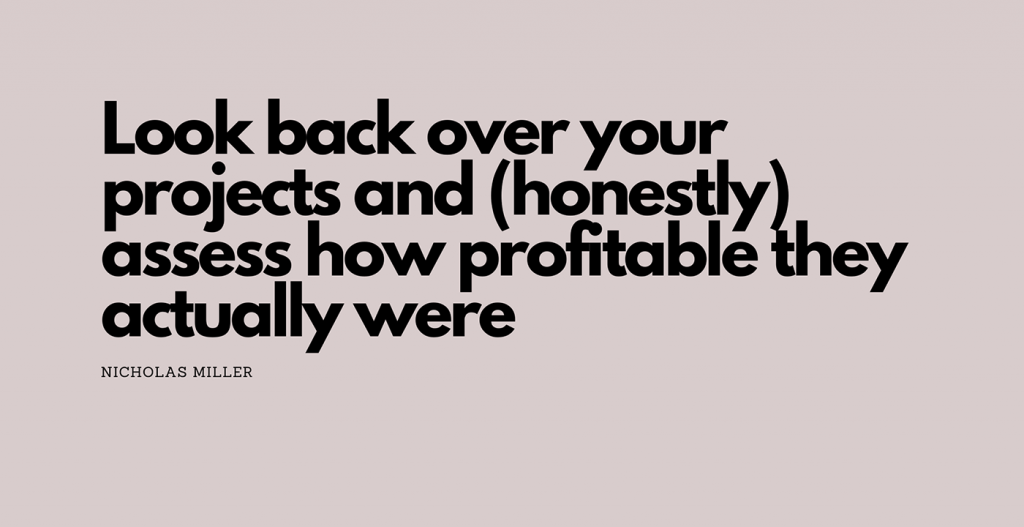
2. Not saying NO to projects
This usually goes hand in hand with mistake number 1.
Due to previous projects not making a profit or less than required – the cash in the bank gets lower. This results in the feeling of having to say yes to every project available to get money coming in. You say yes even if you get the feeling that this project is not quite suited to your skills or if the client just gives off a bad vibe.
The feeling of a project not being a good fit for you, is usually felt as soon as you start.
Then you think back and you just knew it was doomed from day one.
If your projects are profitable, you will have built up a nice bank balance (a rainy day fund) and you will have the confidence and ability to walk away from jobs that don’t sit right with you.
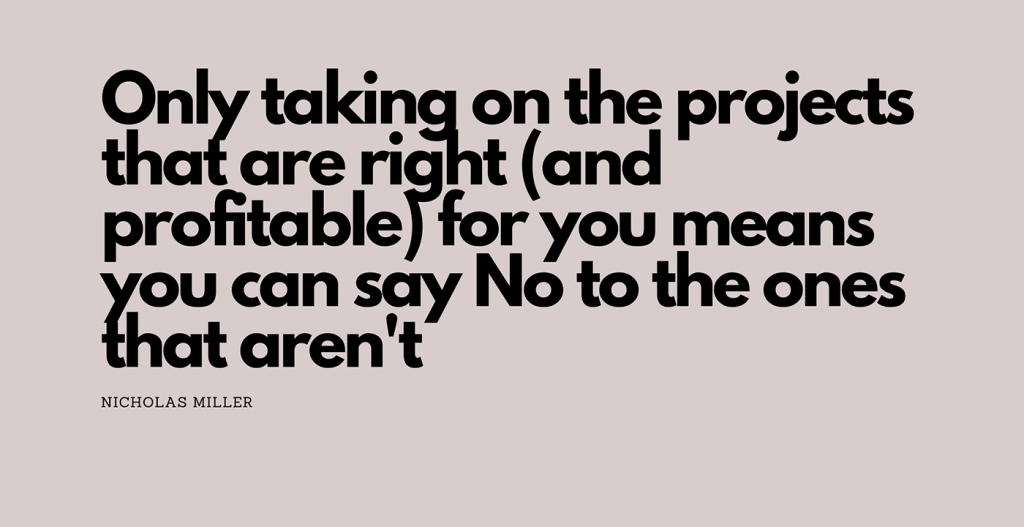
3. Prices are wrong
You go through the process of pricing a project based on labour, materials and add some contingency. All fine.
Then you compare to what you believe someone else will quote – so you reduce the price. You may lower the price until you get it to a figure that FEELS right. No science.
Price is a key element for someone choosing you over a competitor but it’s probably not as big a factor as you think. Sometimes a low price – gives you the least chance of being hired. Cheap gives an impression of low skill or a higher chance of the project going wrong.
We find that interior designers think getting 100% acceptance on their quotes is an achievement – It’s not! It means you are too cheap. Anything over 75% quote acceptance is a red flag to us.
Your competitor is not you. You are not a standard product. Make sure you are different.
Ensure your pricing is scientific based. In turn, this gives you the right amount of profit and keeps you sustainable in the long term.
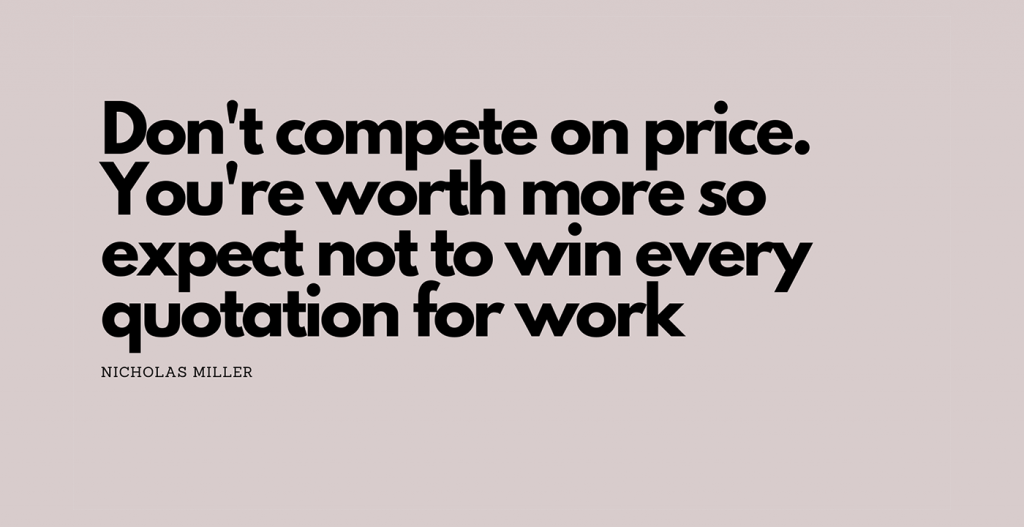
4. Discounting on price
You’ve worked out your price. You’ve now factored in profit and a contingency based on past performance… then the customer states “We love your ideas, we really want you to do the job but.. we’ve had a quote for this much – could you match it?”
A strict policy of no discounting will hold you in a much stronger position over time.
It will give you confidence in your pricing. You also don’t want the reputation for being ‘flexible’ on pricing.
Instead of discounting – run through the outputs or services in the quote and reduce these if they want to meet their budget and lower the overall price.
You want to be flexible on the scope of the project but not flexible on the price.
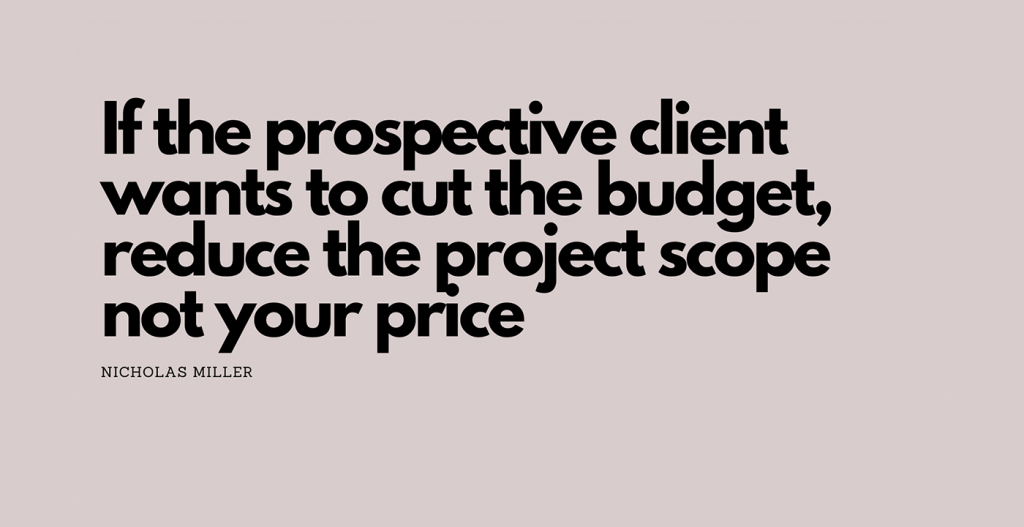
5. Allowing the project scope to creep up
We know that interior designers want to please their customers.
So when the inevitable happens – the client make adaptions to their scope…interior designers feel obliged to adapt the project to satisfy this demand. There is no problem there – it’s called good customer service.
The bit that is required to make it completely fine is by increasing the price to match the increase in scope. To make this whole ordeal less embarrassing and awkward is by making sure your quote is detailed and highlights the outputs in the first place before you begin.
Once the outputs change – which can be easily pointed out and discussed via the quote document– then the conversation about a price increase is made a lot less problematic.
You will find most people have no problem with this change in price if you have the document to reference. Verbal discussions don’t hold much weight here.
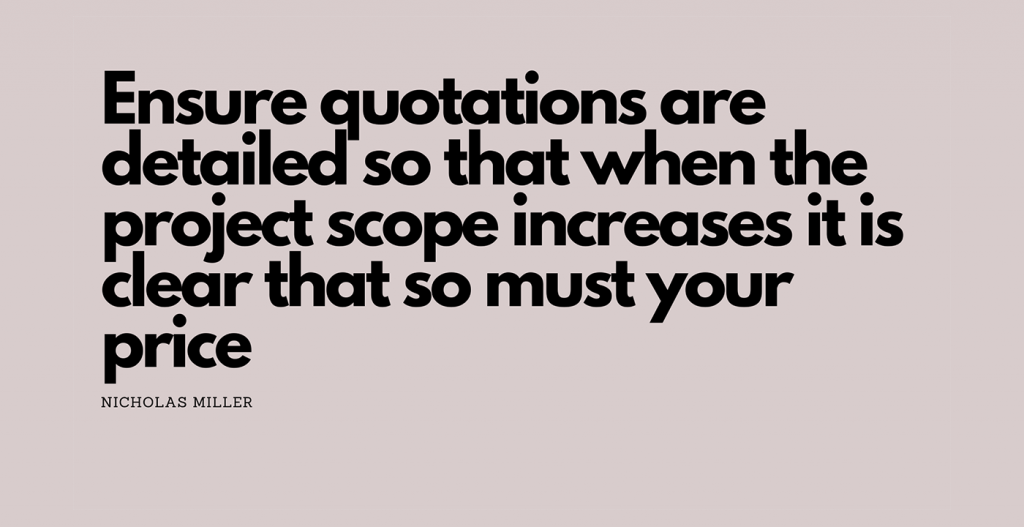
6. Heavy reliance on key customers
We all know the saying – Don’t put all your eggs in one basket.
We find interior designers are sometimes heavily reliant on one or two big clients or contacts that get them the majority of their projects.
This all seems fine until that client or contact either goes out of business or finds a new interior designer and all the work dries up. It’s like a tap has turned off.
Analyse your client base. Make sure there is a healthy split and you are not reliant on just a few big clients or contacts to get you the work.
As well as diversifying in terms of clients, you should analyse the actual sources of potential clients.
If you are now getting a diverse range of clients but all coming via Facebook ads – what happens if Facebook ads stops tomorrow? The tap turns off again.
This is one of those exercises that feels pointless but crucial to do before it’s too late.
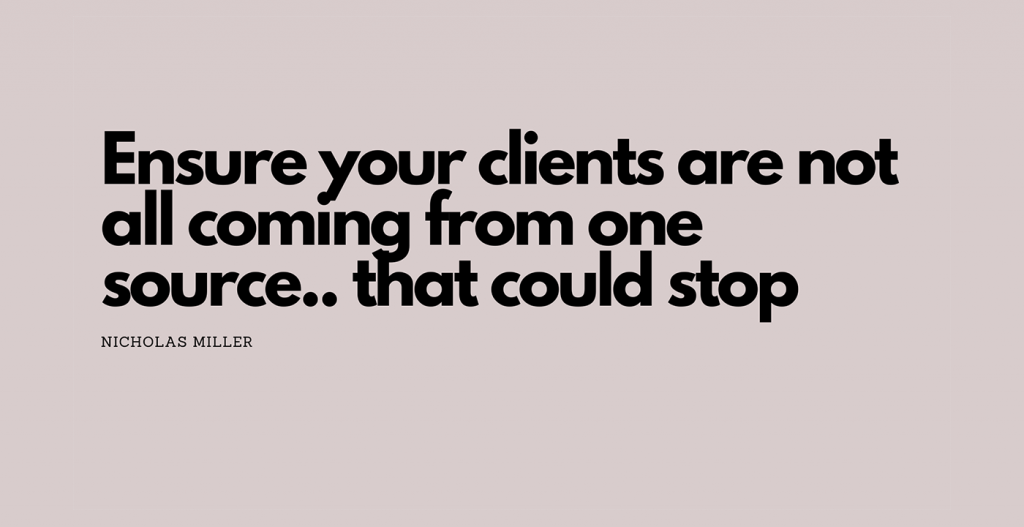
7. Future projects are based on referrals and unpredictable
Being referred is a powerful tool. We are not suggesting you don’t want to be referred – you definitely do!
It is half the battle when you are quoting. It gives you a massive advantage in the quoting process.
Just don’t rely on referrals.
Reliance on referrals leads to you being either very busy (having to say no to great projects due to time constraints) or being very quiet with work.
You want to be in control of your project lead flow. Keeping it consistent and constant.
A steady supply of projects that are based on your capacity.
Create a project pipeline and keep potential clients ‘warm’ until you are ready.
This means being proactive and finding customers – not waiting for them to come to you.
By being consistent – you can plan the future, manage cashflow and ensure a constant source of sustainable work.
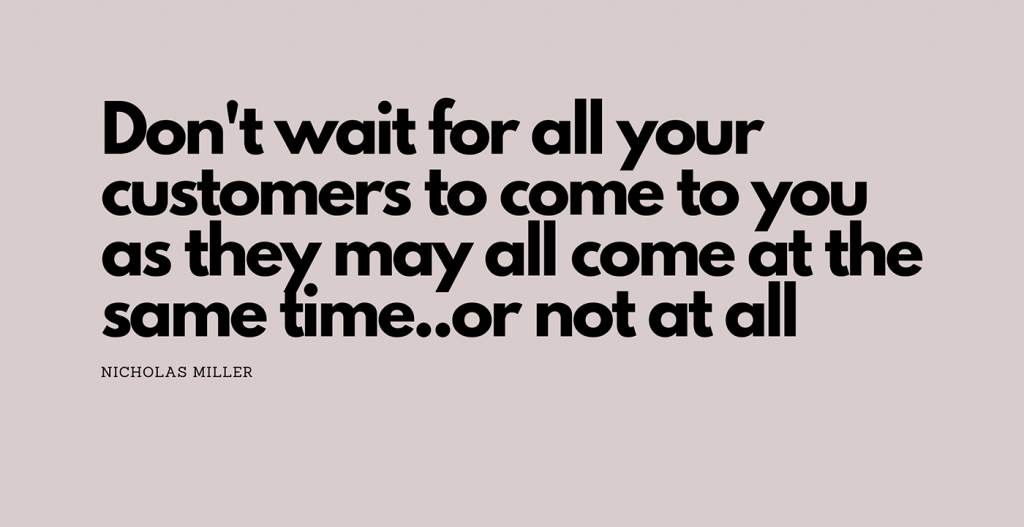
To see if Nicholas can help you, get in touch with him at [email protected]. You can read more about his services on his website https://accountantsbydesign.co.uk or call Nicholas on 07783 437 237
